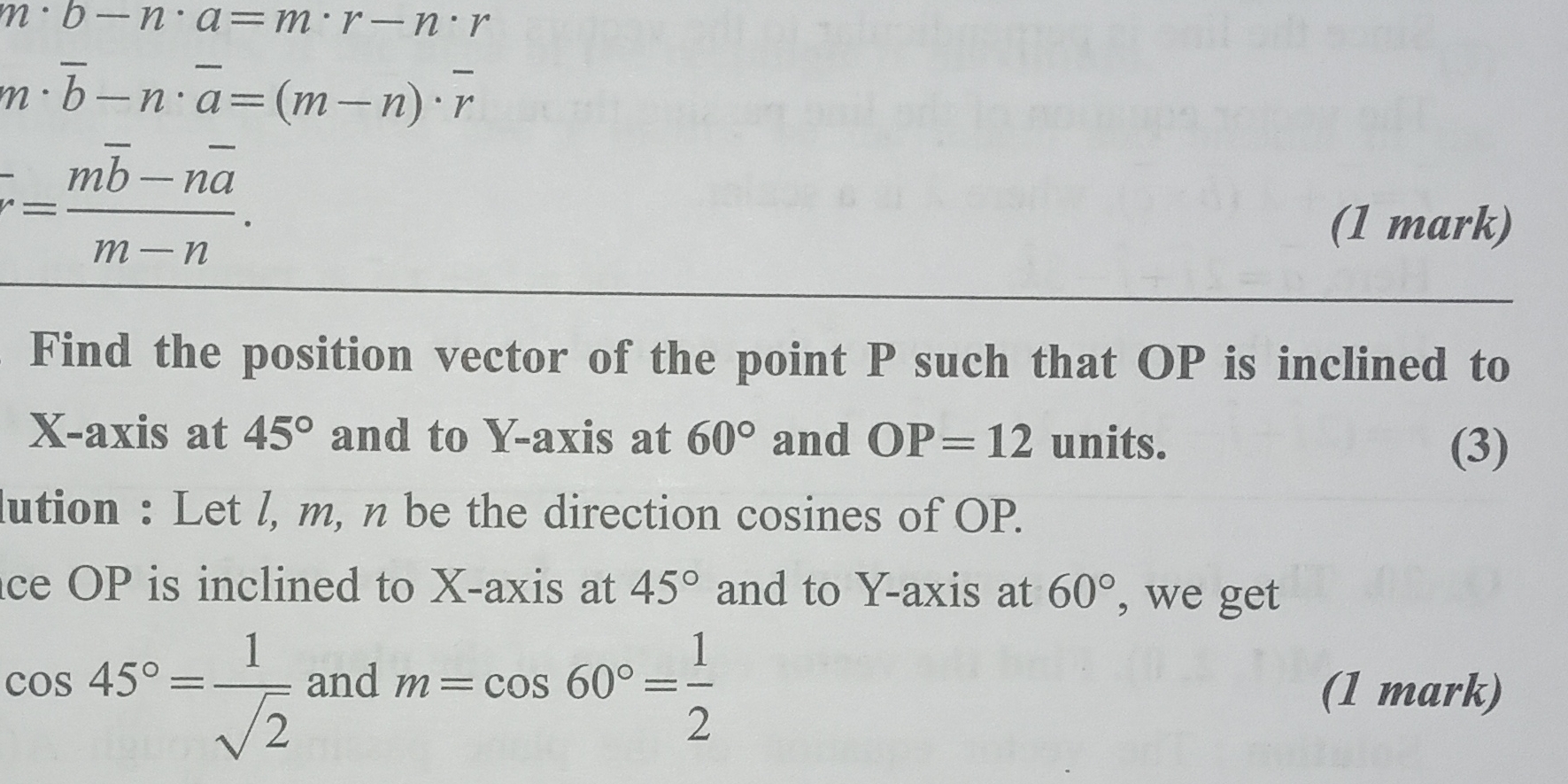Find the position vector of the point P such that OP is inclined to X-axis at 45° and to Y-axis at 60° and OP = 12 units.

Understand the Problem
The question is asking to find the position vector of point P given that it is inclined to the X-axis at 45° and to the Y-axis at 60°, with the distance OP being 12 units. This requires the use of trigonometric principles and vector analysis.
Answer
The position vector of point P is $$ (6\sqrt{2}, 6, 6) $$
Answer for screen readers
The position vector of point P is given by $$ \vec{OP} = (6\sqrt{2}, 6, 6) $$
Steps to Solve
- Identify Direction Cosines
The direction cosines of the angles with respect to the axes are given by the formulas:
- For the angle with the X-axis ($l$): $$ l = \cos(45^\circ) = \frac{1}{\sqrt{2}} $$
- For the angle with the Y-axis ($m$): $$ m = \cos(60^\circ) = \frac{1}{2} $$
- Use the Cosine Rule for Z-axis
To find the direction cosine with respect to the Z-axis ($n$), we can use the relationship: $$ l^2 + m^2 + n^2 = 1 $$
Substituting the values of $l$ and $m$: $$ \left(\frac{1}{\sqrt{2}}\right)^2 + \left(\frac{1}{2}\right)^2 + n^2 = 1 $$
This simplifies to: $$ \frac{1}{2} + \frac{1}{4} + n^2 = 1 $$
- Solve for n
Combining the fractions gives: $$ \frac{2}{4} + \frac{1}{4} + n^2 = 1 $$ $$ \frac{3}{4} + n^2 = 1 $$ Thus, $$ n^2 = 1 - \frac{3}{4} = \frac{1}{4} $$
Taking the square root gives: $$ n = \frac{1}{2} $$
- Form the Position Vector
The position vector $\vec{OP}$ can now be expressed as: $$ \vec{OP} = d(l, m, n) $$ Where $d = 12$ (the distance from the origin $O$ to point $P$).
Substituting the values we find: $$ \vec{OP} = 12 \left( \frac{1}{\sqrt{2}}, \frac{1}{2}, \frac{1}{2} \right) $$
- Calculate the Position Vector
Calculating each component, we get:
- $x$-component: $$ 12 \cdot \frac{1}{\sqrt{2}} = \frac{12}{\sqrt{2}} = 6\sqrt{2} $$
- $y$-component: $$ 12 \cdot \frac{1}{2} = 6 $$
- $z$-component: $$ 12 \cdot \frac{1}{2} = 6 $$
Thus, the position vector is: $$ \vec{OP} = (6\sqrt{2}, 6, 6) $$
The position vector of point P is given by $$ \vec{OP} = (6\sqrt{2}, 6, 6) $$
More Information
This position vector reflects the components of point P in a 3D space, taking into account the angles of inclination to the axes and the distance from the origin.
Tips
- Forgetting to check for missing direction cosines. Always use the equation $l^2 + m^2 + n^2 = 1$ to validate your calculations.
- Confusing angles with respect to different axes; ensure you apply the correct cosine values.
AI-generated content may contain errors. Please verify critical information